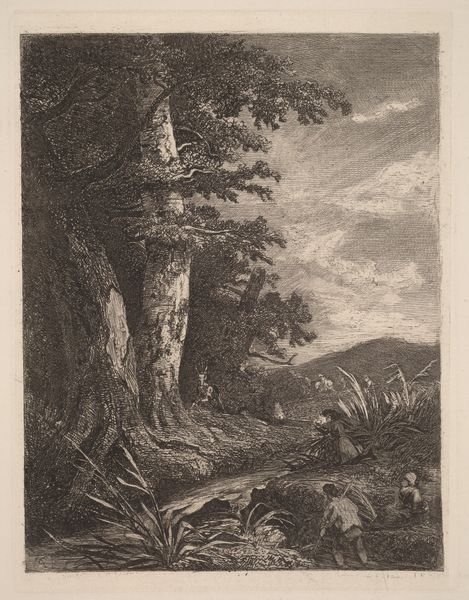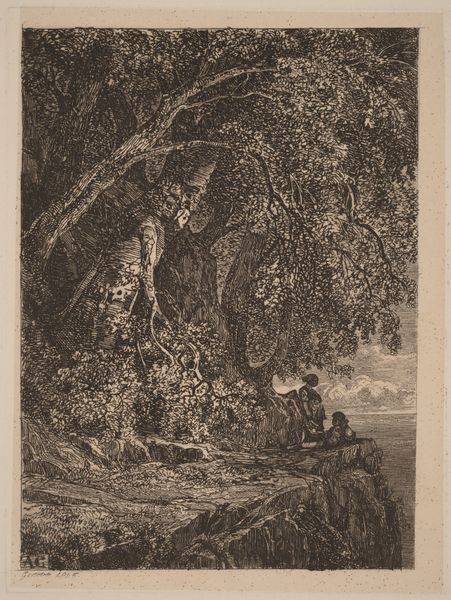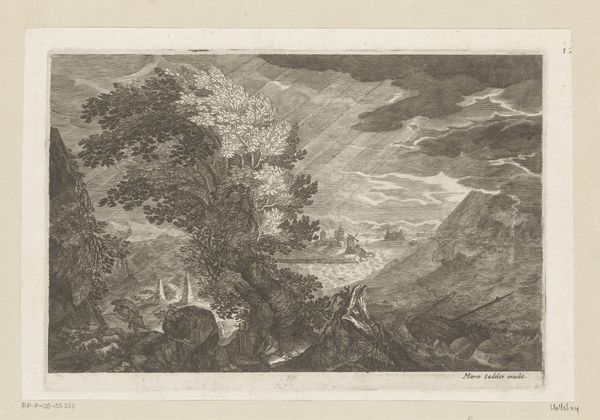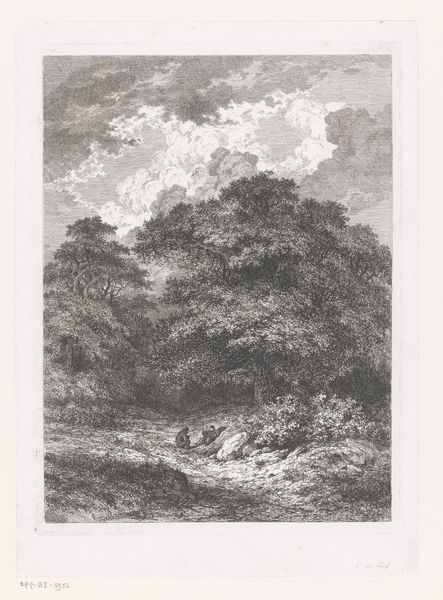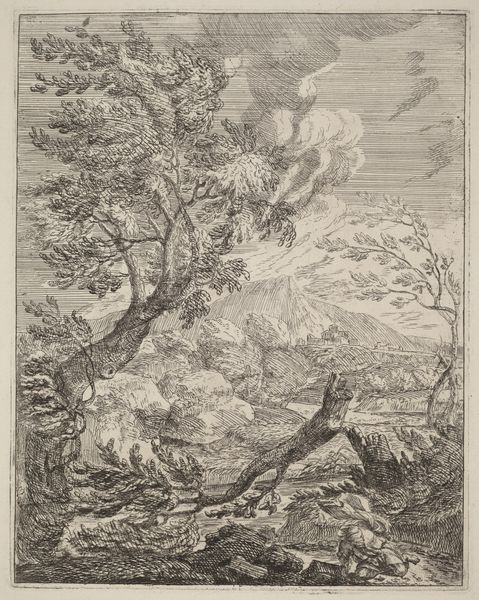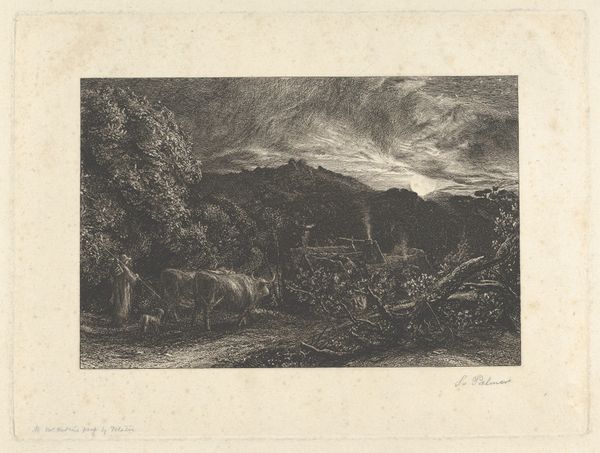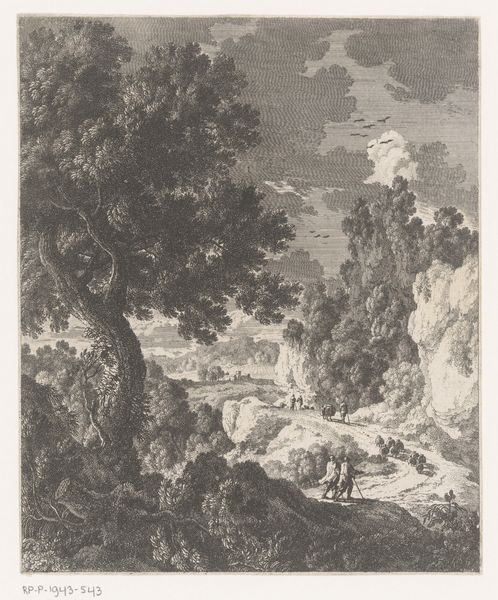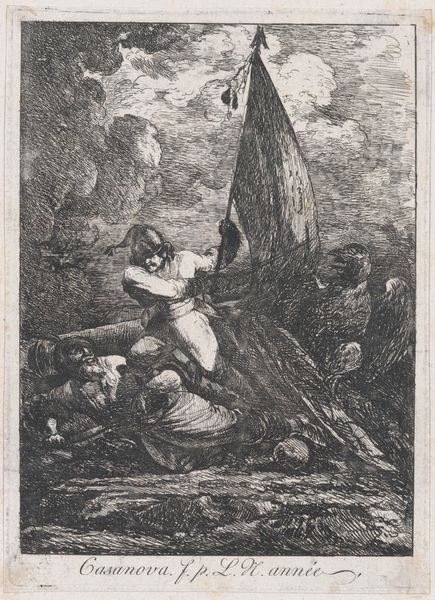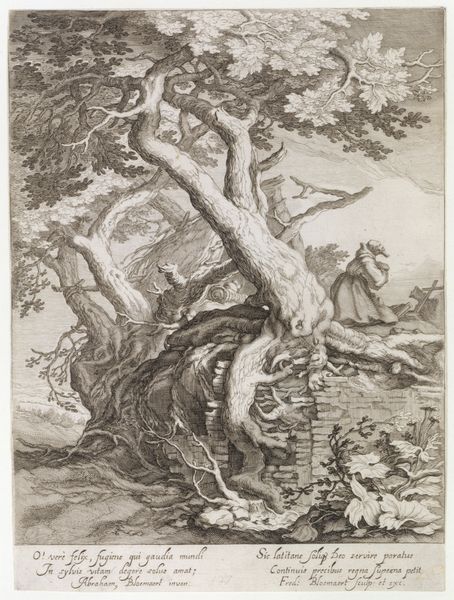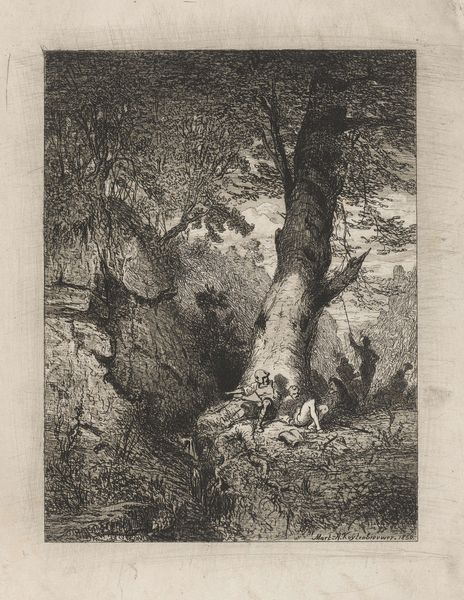
Dimensions: Other: 19 × 13 5/8 in. (48.3 × 34.6 cm)
Copyright: Public Domain
Curator: Angélique Moitte's "Tempest," created around 1770, is currently held here at the Metropolitan Museum of Art. The piece presents us with a dramatic scene, executed in engraving and etching. Editor: Yes, dramatic is definitely the word. It's all churning skies, violently bent trees, and that ominous lightning strike... even at this scale, the intensity is palpable. You can almost feel the wind. I'm curious about the production of prints as more widely-accessible images at this moment in time, particularly those of such emotional subjects. Curator: It certainly captures the Romantic movement's fascination with nature's power. What is intriguing, in terms of its socio-political dimensions, is that images such as this reflect an emerging public appetite for emotional experience mediated through landscape—transforming viewers through engagement. It catered to a particular, educated sensibility. Editor: Absolutely, but also thinking about it materially: engraving and etching are demanding processes. All that fine line work to build up those atmospheric effects represents many, many hours of skilled labour to make what you said, this transformative engagement. The print, once done, made multiple copies. It had an enormous social reach. Curator: Indeed. And consider, too, that "Tempest," as we see inscribed here, is dedicated to Madame de Damery, likely a patron who influenced Moitte’s career. This dedication speaks volumes about the networks and social dependencies of artistic production in the 18th century, something museums today often seek to hide behind some narrative of solitary genius. Editor: Right. And it gives more significance to that labour: working not just on the plate, but working to negotiate patronage. Looking at the print’s details –the swirling lines giving shape to wind, the cross-hatching defining the rockface– you recognize the immense control Moitte had of this medium. Each print serves to amplify her effort. It’s fascinating when you remember how Moitte leveraged artistic practice as part of her livelihood. Curator: Yes, and this brings me back to this particular image, what kind of emotional life this image helped cultivate and standardize through this period. It is clear Moitte's prints tapped into these wider historical shifts towards valuing individual experience and emotional display. Editor: So from labour to legacy. Looking at "Tempest," knowing all that it stands for and the work put into its production only enriches the act of viewing.
Comments
No comments
Be the first to comment and join the conversation on the ultimate creative platform.
